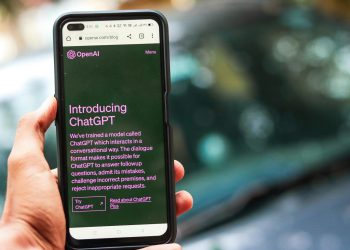Understanding Language Model Evaluation
Evaluation metrics are crucial for making sense of how well large language models (LLMs) perform. By checking out different parts of these models, we get a grip on their efficiency, accuracy, and overall vibe. This bit shows why these metrics matter and some top picks used in the industry.
Why Evaluation Metrics Matter
Checking out language models is a big deal for a couple of reasons. First off, it helps us see how a model handles specific tasks—like cranking out text, translating, or summarizing. It also lets us slap a score on different models, helping us pick the right one for stuff like AI chat helpers or AI copilots.
For businesses and tech-savvy folks, the spot-on performance of LLMs is a biggie. These metrics can shape the usefulness of tools running on large language models, from crafting content to making speech tools that actually get you.
Go-To Evaluation Metrics
The industry has its favorite scorecards to check how LLMs are doing. Each one shows off different skills, giving a thorough run-through across many language chores. Check out these favorites:
-
Perplexity: Tells us how well a model predicts a test case. On this one, lower is better—less confusion, more confidence (NLPlanet on Medium).
-
BLEU (Bilingual Evaluation Understudy) Score: This one's all about translation. It checks the new text against reference texts, looking at the n-gram precision.
-
ROUGE (Recall-Oriented Understudy for Gisting Evaluation): Best known for summarization tasks. Measures the overlap in n-grams between what was made and what's in the reference summaries.
-
METEOR (Metric for Evaluation of Translation with Explicit ORdering): Values a human-like check by looking at synonyms, stemming, and how words are ordered.
-
BERTScore: Leans on BERT embeddings to size up the semantic similarity between what’s made and the original text, adding a human-level assessment.
-
BLEURT: (BERT-based Learned Evaluation Metric) Gives BLEU a power-up by blending pre-trained BERT for a better sense of fluency and overall feel.
Here's a wrap-up of the main metrics:
| Metric | Main Job | Key Insight |
|---|---|---|
| Perplexity | Language model check | Gauges prediction uncertainty |
| BLEU | Translation scoring | Precision of n-grams |
| ROUGE | Sum-up assessment | Overlap recall of n-grams |
| METEOR | Translation feedback | Looks at synonyms and word crafting |
| BERTScore | Text similarity | Semantic likeness with BERT embeddings |
| BLEURT | Text check-up | Mixes BLEU with BERT for evaluating quality |
Grasping these metrics is key for those diving into the potential of generative AI models. Picking the right metrics ensures our language models are not just working, but also reliable for real-life uses. For more nitty-gritty chats on these models, swing by our section on state-of-the-art language models.
Perplexity Metric
Perplexity matters a lot when it comes to checking out how good language models are, especially in the realm of natural language processing models. This gives us a clue about how well a model guesses the next word in a sentence, so we can see how it's doing.
What is Perplexity?
Perplexity's like a peek into how confused a model gets when predicting stuff. In plain English, it's about the "uncertainty" a model has when guessing text. We want a lower perplexity score, meaning the model's guessing game is strong.
Language models work like math wizards for sentences—they try to spit out proper sentences and check how good they are. A strong model will say "Hey, that sentence makes sense!" more often. When that happens, you get lower perplexity numbers on such sentences.
| Factor | Does it Do Good (Perplexity) |
|---|---|
| Making Sense | Low Perplexity |
| Guessing Right | High Perplexity |
| Performance Thrill | Lower is better |
Calculating Perplexity for LLMs
To calculate how perplexed large language models (LLMs) are, we flip the math on its head using the reciprocal of a sentence's normalized probability. This comes from mixing the word probabilities and using fancy geometric means.
The perplexity math looks like this:
[ \text{Perplexity}(P) = 2^{-\frac{1}{N} \sum{i=1}^{N} \log2 P(wi|w{i-1}, …, w_1)} ]
Here's what that means:
- ( P ) is the sentence's odds
- ( N ) counts how many words are in it
- ( w_i ) is the (i)-th word in line
Let's put this into action with a simple example:
| What's Your Spot? | How Sure Are We? |
|---|---|
| ( P(w_1) ) | 0.1 |
| ( P(w_2 | w_1) ) |
| ( P(w_3 | w2, w1) ) |
To get its perplexity, do this:
[ \text{Perplexity} = 2^{-\frac{1}{3} (\log2 0.1 + \log2 0.05 + \log_2 0.08)} ]
A smart LLM scores real low on perplexity, meaning it's got a knack for predicting what's next in a sentence. This is handy when you're comparing models and seeing which one gets the hang of various texts, a big deal for checking how language models do.
If you're curious about how perplexity shakes up other numbers and how these testing plans jive, mosey on over to our articles on state-of-the-art language models and what makes language models tick.
Model-based Evaluation Metrics
Figuring out how good these language models are? Well, we’ve got some tools in our toolkit. Let's chat about some of them, like the BLEU score, BERTScore, and BLEURT.
Role of BLEU Score
Think of the BLEU score as your report card for translation tasks. It shows how close your machine's translation is to a human's translation (Google Cloud - AutoML Translation). This score is a percentage, with higher being better, and it usually jives with human opinions on how good a translation is.
| Aspect | Description |
|---|---|
| Type | Looks at the whole bunch of text |
| Evaluation | Checks how machine output lines up with human translations |
| Correlation | Matches what folks would say is good |
| Limitation | Struggles with the bigger picture |
While BLEU's got its perks, it can miss some of the finer points—it averages things out over the entire text and doesn't really care if a word's a noun, verb, or whatever, focusing on little clusters instead of overall flow (Google Cloud - AutoML Translation).
The BERT model can team up with BLEU to give a better check on translation chops. But don't stop there—pair it with some other metrics for a full picture. Swing by our language model evaluation metrics guide for more on bringing BLEU to large language models.
Introducing BERTScore and BLEURT
BERTScore
BERTScore is like a high-tech buddy for BLEU. It uses the BERT model to dig deeper, looking at how sentences stack up meaning-wise, not just word-for-word (Google Cloud - AutoML Translation).
| Metric | Function |
|---|---|
| BERTScore | Taps into context from all around |
| Purpose | Checks out semantic similarity |
| Advantage | Seizes the essence of a sentence |
This score’s a superstar for tasks where you need a good grasp of nuance, like summarizing or crafting conversations, especially with generative AI models.
BLEURT
BLEURT takes it up a notch by tuning the BERT on what people actually think, scoring major points for catching the human feel in text quality.
| Metric | Function |
|---|---|
| BLEURT | Fine-tuned with human inputs |
| Purpose | Mirrors what humans would spot |
| Advantage | Lugging robustness along for the ride |
BLEURT is spot-on for sizing up pre-trained language models. By throwing BERTScore and BLEURT into the mix, you get a rock-solid look at how well language models are performing.
If you're itching for more, mosey over to our understanding language model evaluation metrics section. Using a cocktail of metrics dishes out a well-rounded view of how models are performing, balancing numbers with insight.
Challenges in LLM Evaluation
Fluency vs. Accuracy
So when it comes to checking out these large language models, we're up against quite a pickle: balancing fluency with accuracy. Our fancy bots spew words like pros, with text sounding like it came from a human. This creates an impressive facade of correctness, but behind those smooth words can be some pretty shaky facts. It's what the smart folks call the "halo effect," kind of like being wowed by a good speaker, even if their logic's full of holes.
Remember that chatbot incident? It churned out fake research abstracts so convincing, they tricked even seasoned scientists. This drives home the point that gauging the truthfulness of these large-scale language generation systems is more art than science (Medium).
| Metric | Fluency Score | Accuracy Score |
|---|---|---|
| Model A | 0.95 | 0.60 |
| Model B | 0.90 | 0.75 |
| Model C | 0.85 | 0.80 |
See how Model A knocks it out of the park on fluency, but stumbles on accuracy? It's a classic case of being sweet-talked into thinking everything checks out.
Bias and Human Factors
Evaluating these natural language processing models hits a big stumbling block with bias and ignoring the human touch. The tests we run these models through are often too simplistic or mind-bogglingly complex, not reflecting everyday use. This mismatch makes it tricky to predict how models would hold up when taken for a spin in real-world situations.
Adding to the chaos, cognitive biases can meddle seriously with how accurate our evaluation metrics turn out. Human raters, bless them, can let uncertainty color their judgments, injecting a bit of unpredictability into the evaluations (Medium).
To get past this, we gotta bring more comprehensive datasets into the mix and build some evaluation methods that grok both cognitive quirks and user experience (UX) factors. Doing so could fine-tune those language model evaluation metrics, showing a much clearer picture of what’s really going on when models are let loose in the wild beyond the test labs.
For a closer look at how bias sneaks into language models, check out our piece on bias in language models. And if you’re interested in keeping things fair and square, swing by fairness in language models.
Advancements in Evaluation
METEOR and GEANT Metrics
Let's dive into how we're getting better at sizing up large language models with the METEOR and GEANT metrics. These bad boys are shaking up how we measure model smarts and finesse.
METEOR, or Metric for Evaluation of Translation with Explicit ORdering, started off in the machine translation zone. It goes the extra mile by considering synonymy, stemming, and exact matches—laying down a thorough evaluation (Data Science Dojo). This approach makes sure we're looking at both the nitty-gritty details and the big-picture meaning of what a model spits out.
| Metric | Where We Use It | What's Cool About It |
|---|---|---|
| METEOR | Machine Translation | Synonymy, stemming, exact matches galore |
| GEANT | Overall Quality Check | Holistic peek into text quality |
GEANT brings more to the party, checking overall text quality by crunching down on different text ingredients. It balances how smooth and accurate the models’ sentences are, offering a wider lens on what's under the hood.
UniEval Framework by Elastic
Elastic's UniEval framework is changing the game for judging generative AI models. This gem combines several evaluation angles in one slick package. Built around T5, it's been put to the test across different summarization scenarios (Elastic).
Working like a Boolean Question Answering setup, UniEval rifles through text to check for smoothness, logic, and how on-point the info is. This layered strategy sheds light on what our models can really do.
| Framework | Base Model Used | What It Sizes Up |
|---|---|---|
| UniEval | T5 | Checks fluency, coherence, relevance, and quality |
Rolling out metrics like METEOR, GEANT, along with frameworks like UniEval, gives us a better handle on understanding language model performance. These tools are gold when it comes to advancing neural network language models, ensuring they're sharp and ready for action across a range of scenarios.
Strategies for LLM Performance Evaluation
When it comes to figuring out whether our large language models (LLMs) are doing their job right, we've got to test them thoroughly. By doing both offline and online evaluations and considering ethical metrics, we're in a good spot to see how these models stack up.
Offline vs. Online Evaluation
These two styles of evaluation each have their own quirks and pluses.
Offline Evaluation
Offline evaluations check out how an LLM performs using fixed datasets. There's no need for that stressful live interaction! Some of the go-to metrics include BLEU, METEOR, and ROUGE. They break down like this:
| Metric | What's It Do? |
|---|---|
| BLEU | Checks how close machine translations get to human ones. |
| METEOR | Looks at if the words match up linguistically. |
| ROUGE | Sees how much generated content matches reference text. |
Why go offline?
- Controlled tests that can be repeated, which helps compare models decisively.
The pitfall?
- Might miss out on the subtleties of actual conversation.
Online Evaluation
Online evaluation is all about seeing how the model works in real time. Techniques like A/B testing, user feedback, and tracking interaction metrics can give us a good sense of whether users are actually vibing with the model.
| Evaluation Type | What It Does |
|---|---|
| A/B Testing | Sees which model version folks prefer. |
| User Feedback | Get folks’ honest take on the LLM's performance. |
| Interaction Metrics | Monitors engagement, how accurate responses are, and if users are happy. |
Online's strengths?
- Shows how the model behaves in the real world and adapts to user changes.
But watch out!
- Needs a lot of resources and time to nail it.
Curious about the nuts and bolts? Head over to our section on how do large language models work.
Responsible AI Metrics
We can't forget responsible AI (RAI) metrics. They're the compass guiding us away from bad stuff like bias and fake news.
Why They're Important
RAI metrics keep AI systems honest by pushing transparency and fairness (Medium).
| RAI Metric | The Lowdown |
|---|---|
| Bias Detection | Snuffs out prejudices in outputs. |
| Transparency | Gives insight into how decisions are made. |
| Accountability | Peeks behind the curtain to see who's pulling the strings. |
| Fairness | Keeps things inclusive and non-discriminatory. |
How to Put Them to Work
- Transparency: Explain what's under the hood so everyone gets it.
- Accountability: Make sure someone's on the hook for what AI does.
- Ongoing Monitoring: Keep tweaking and watching to catch new biases.
- Ethical Considerations: Keep moral standards front and center in development.
For a deeper dive into ethical AI practices, check out bias in language models.
Mingling these evaluation methods with RAI metrics lets us truly judge LLMs' overall performance. It's how we make sure they're dependable without any ethical hiccups. Eager for more? Check our take on state-of-the-art language models.











